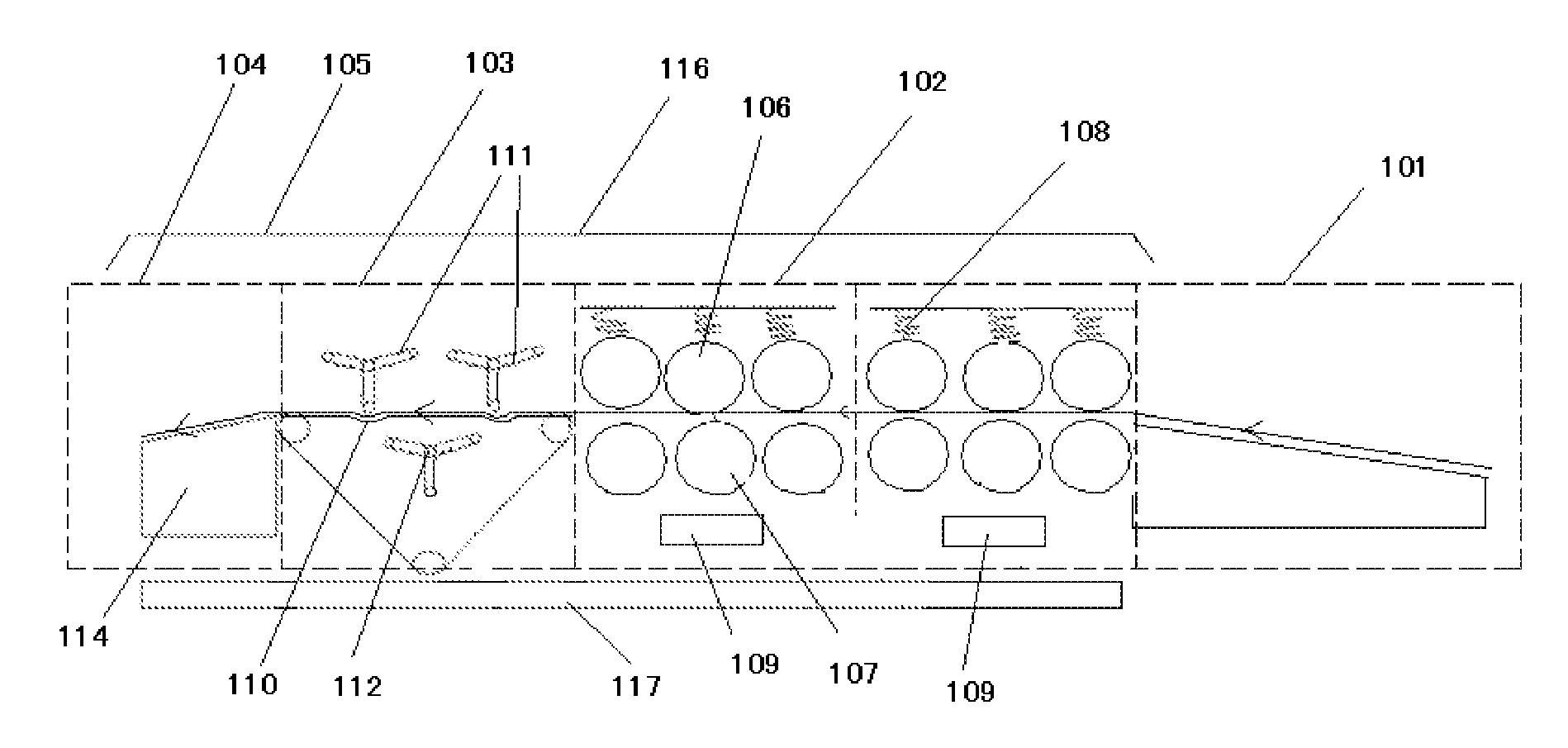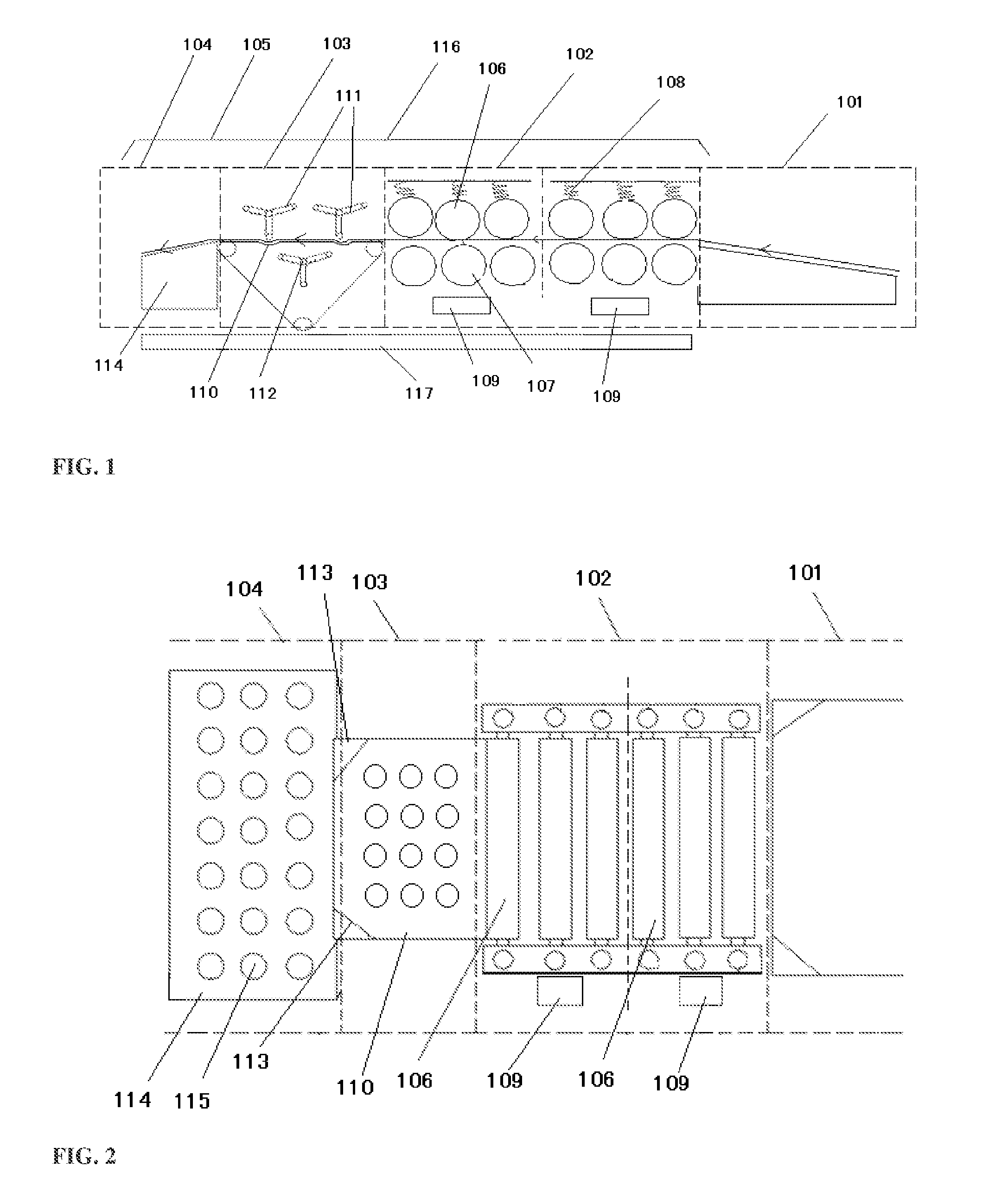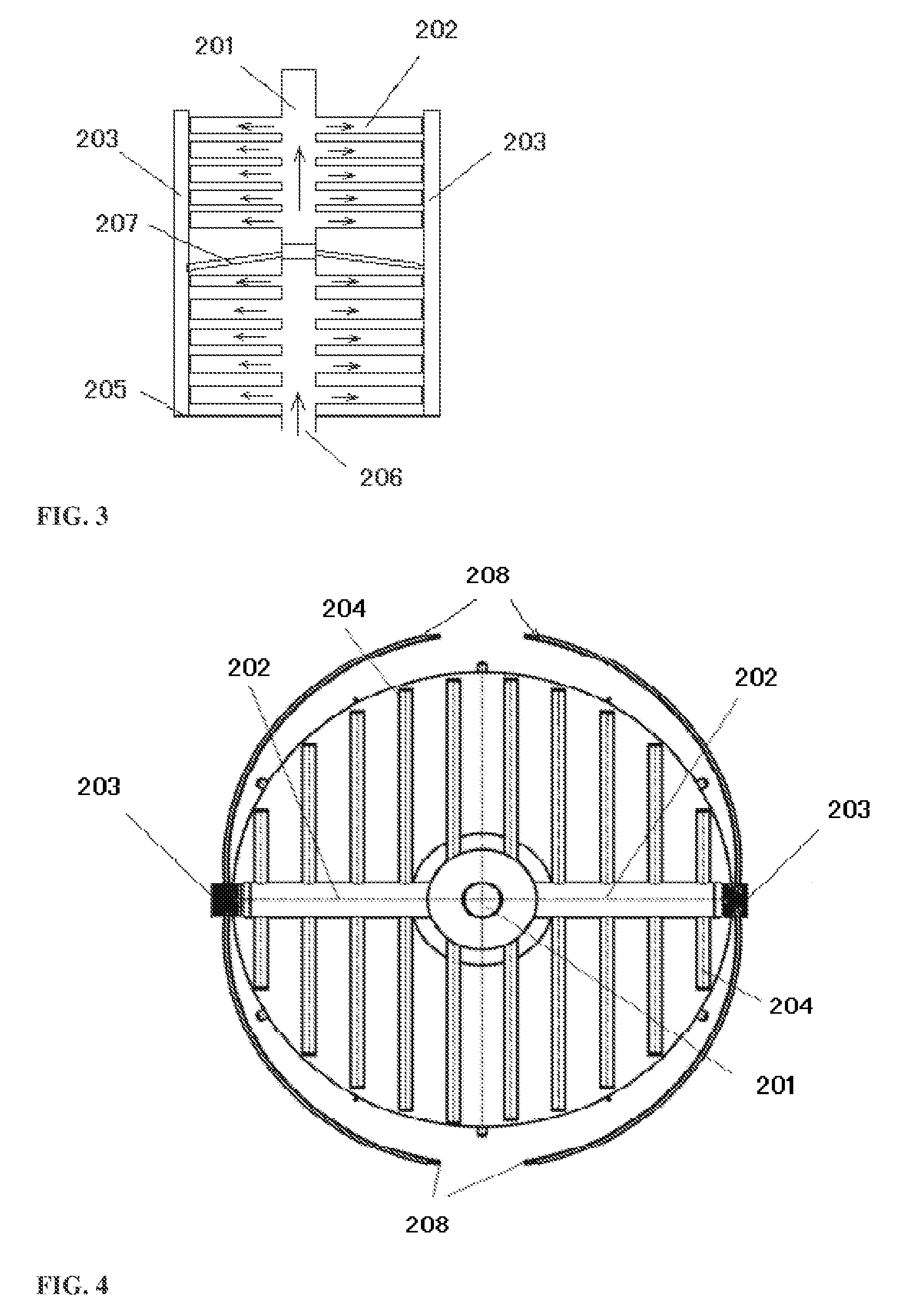Processing line of bast fiber
a processing line and bast fiber technology, applied in the direction of continuous processing, severing fibres, combing machines, etc., can solve the problems of reducing the annual output and quality of chinese wool, the difficulty and pressure of biochemical degumming, and the inability to meet domestic demand for chinese wool. , to achieve the effect of improving the fiber separation index and the uniformity of biochemical degumming, reducing cost, and reducing the difficulty and pressure of bio
- Summary
- Abstract
- Description
- Claims
- Application Information
AI Technical Summary
Benefits of technology
Problems solved by technology
Method used
Image
Examples
Embodiment Construction
[0049]The present disclosure will be described in detail with reference to the drawings and example embodiments.
[0050]The basic processes of bast fiber comprises breaking hemp skin, sorting, cutting off roots and tops, then mechanically degumming with a mechanical degumming device; the hemp is basketed after the mechanical degumming and processed by the biological and / or high temperature digesting for degumming and the high temperature washing, and then manufactured into the degummed hemp by separating and washing, washing and softening, radio drying, and the degummed hemp is subjected to mechanical softening and reconditioning and is manufactured into the long hemp fiber strip by stretch-breaking carding, combing, drawing; and then the fallen hemp is subjected to carding and grading, then becomes the short hemp fiber.
[0051]In each of above processes, the mechanical degumming, biological degumming, high temperature digesting, high temperature washing, separating and washing, washing...
PUM
| Property | Measurement | Unit |
|---|---|---|
| temperature | aaaaa | aaaaa |
| height | aaaaa | aaaaa |
| height | aaaaa | aaaaa |
Abstract
Description
Claims
Application Information
 Login to View More
Login to View More - R&D
- Intellectual Property
- Life Sciences
- Materials
- Tech Scout
- Unparalleled Data Quality
- Higher Quality Content
- 60% Fewer Hallucinations
Browse by: Latest US Patents, China's latest patents, Technical Efficacy Thesaurus, Application Domain, Technology Topic, Popular Technical Reports.
© 2025 PatSnap. All rights reserved.Legal|Privacy policy|Modern Slavery Act Transparency Statement|Sitemap|About US| Contact US: help@patsnap.com



